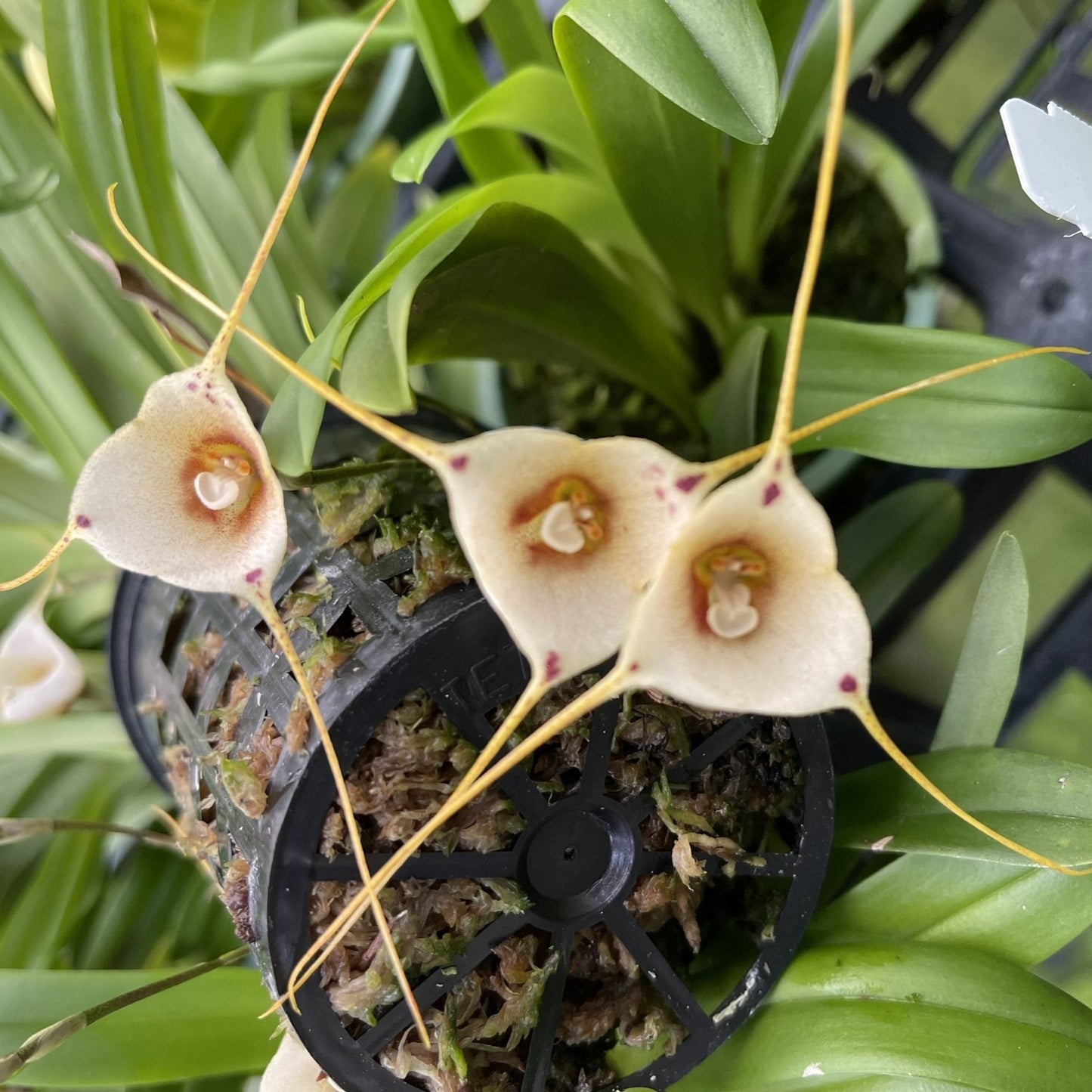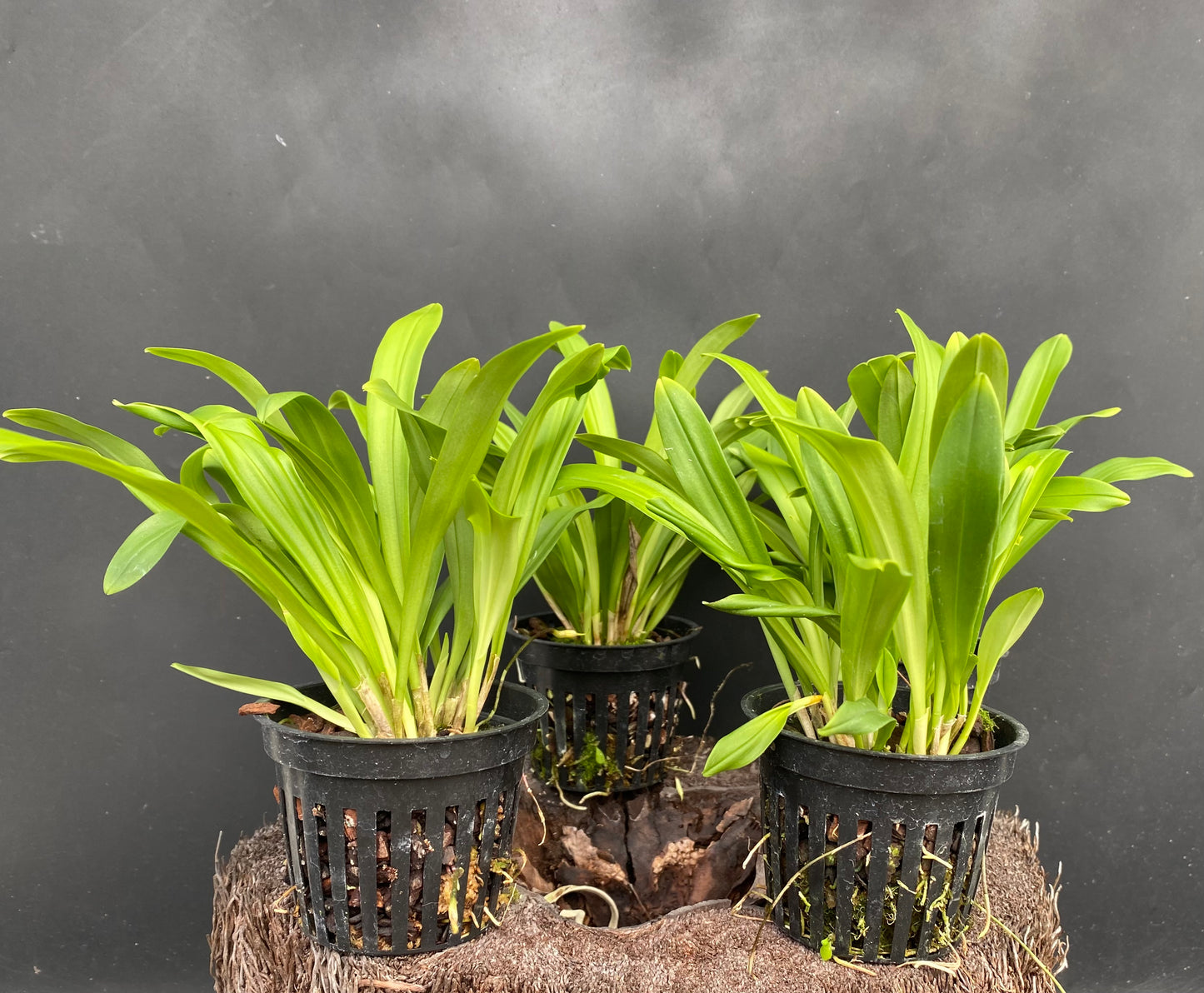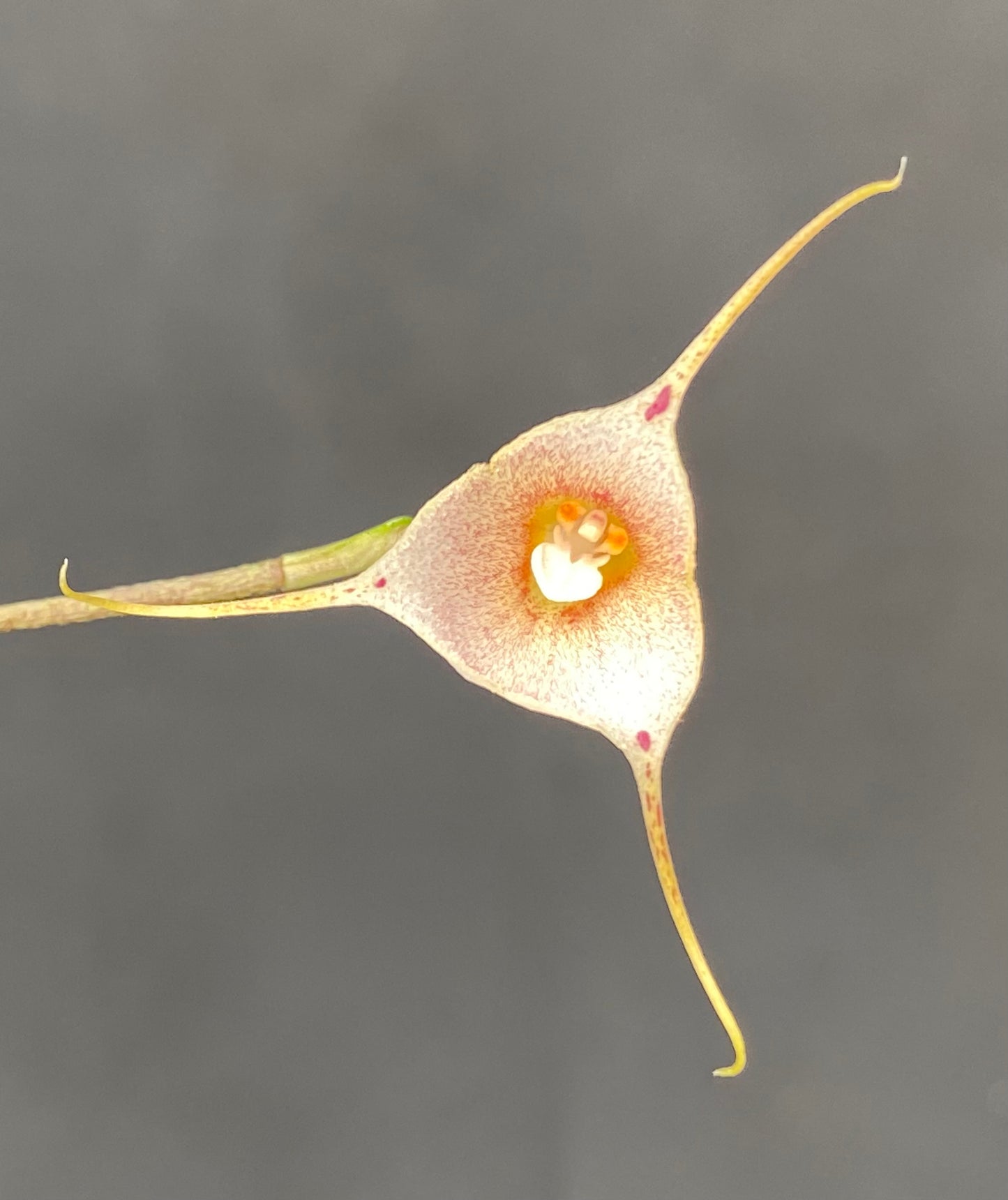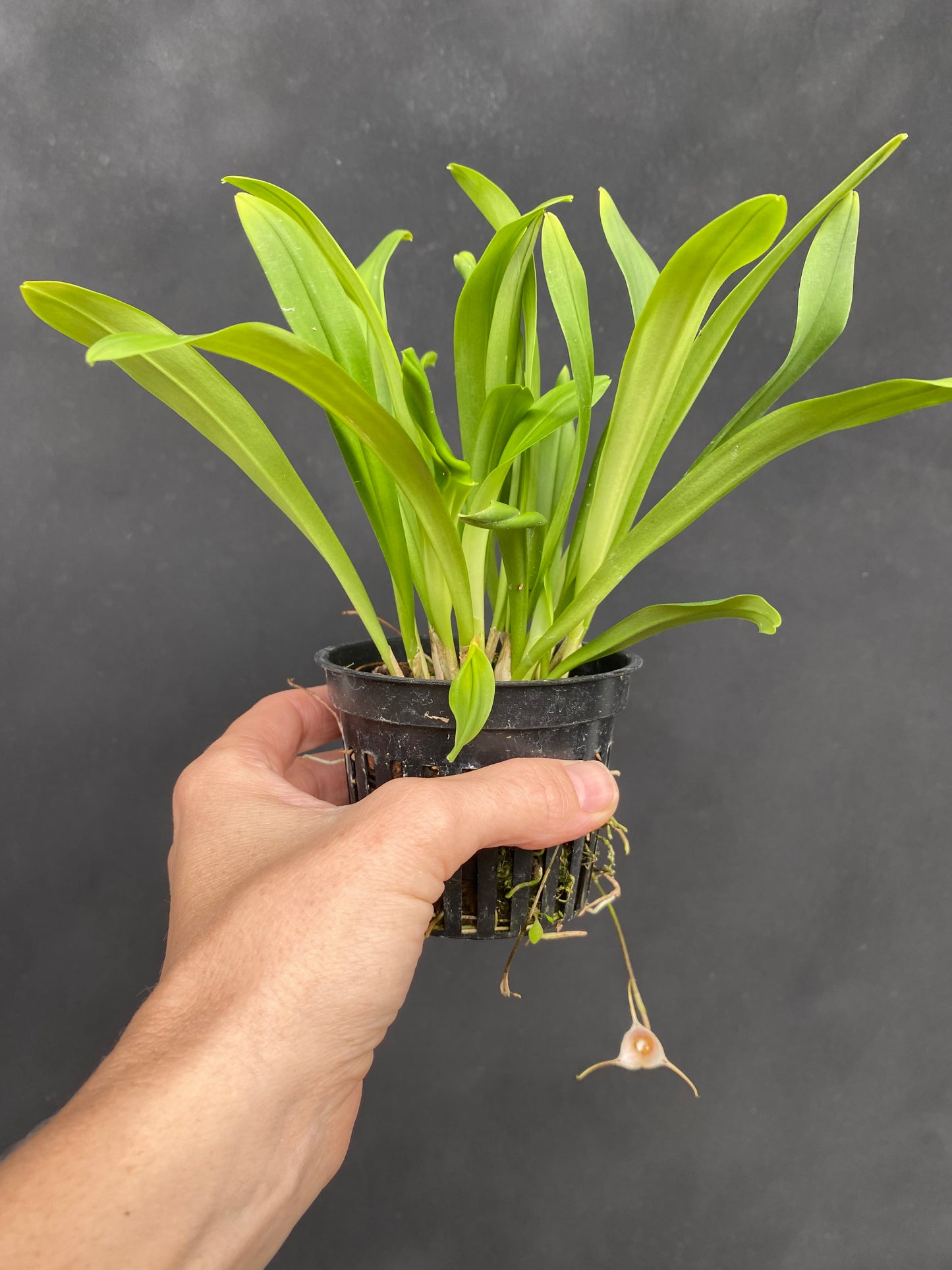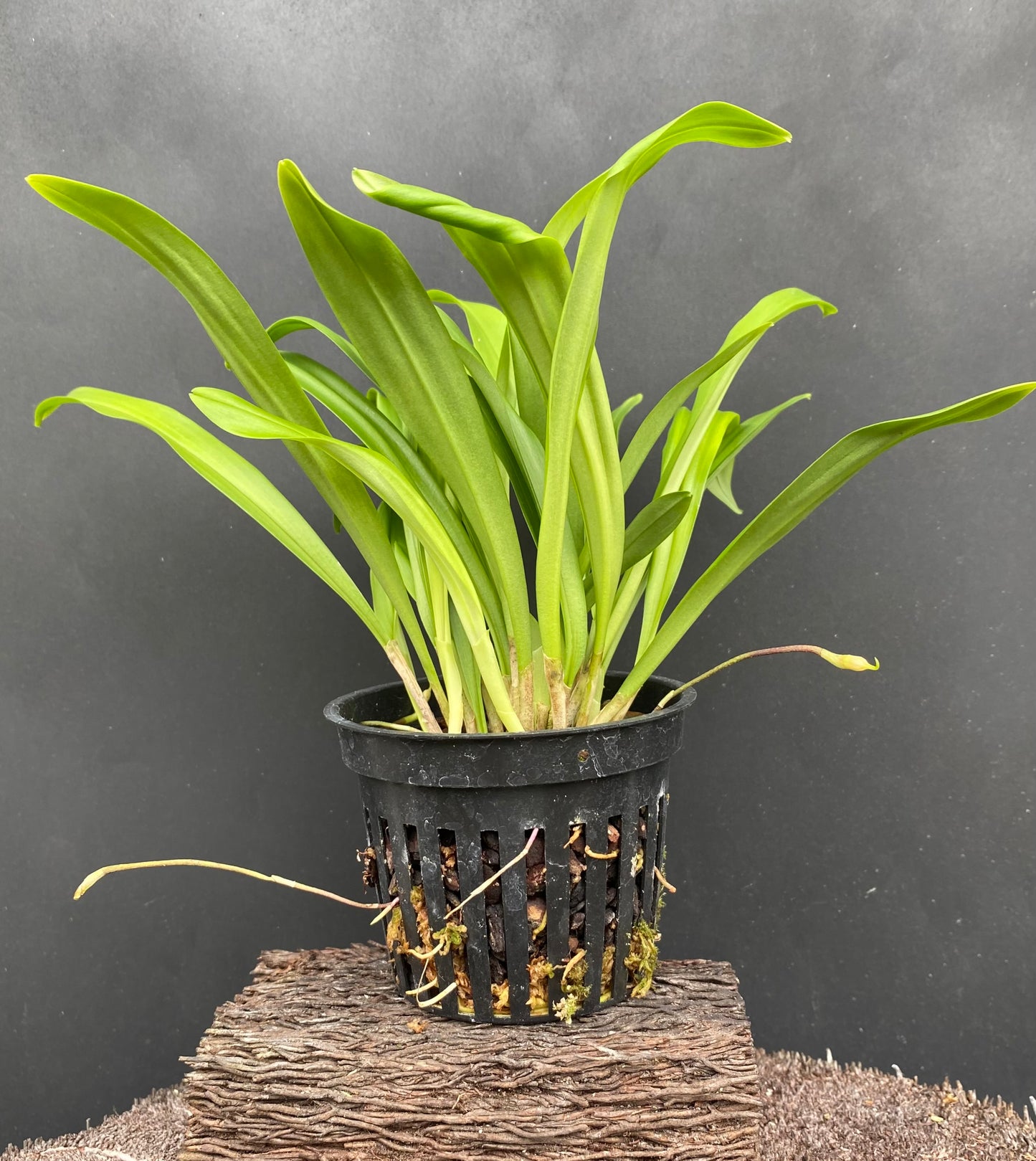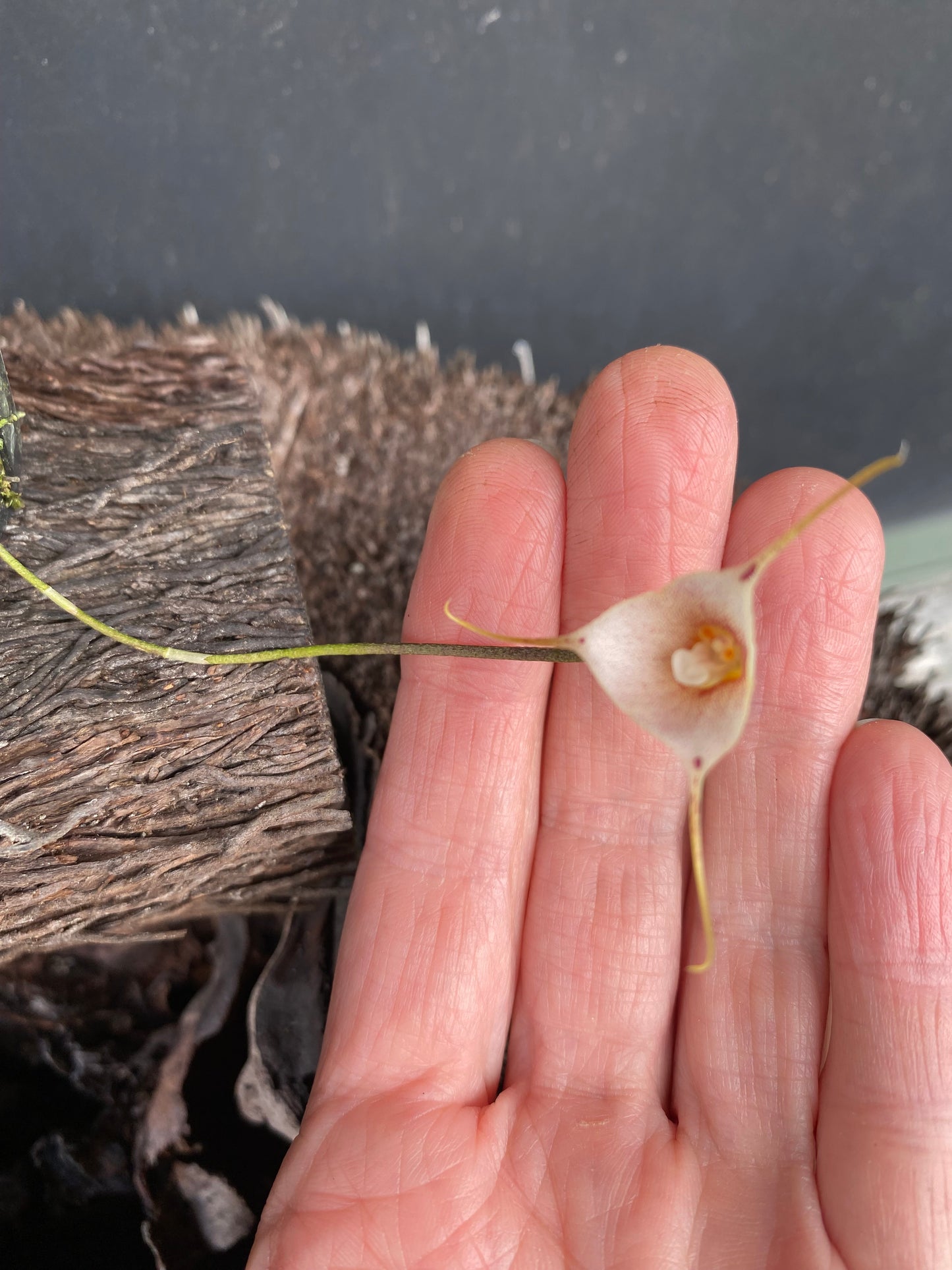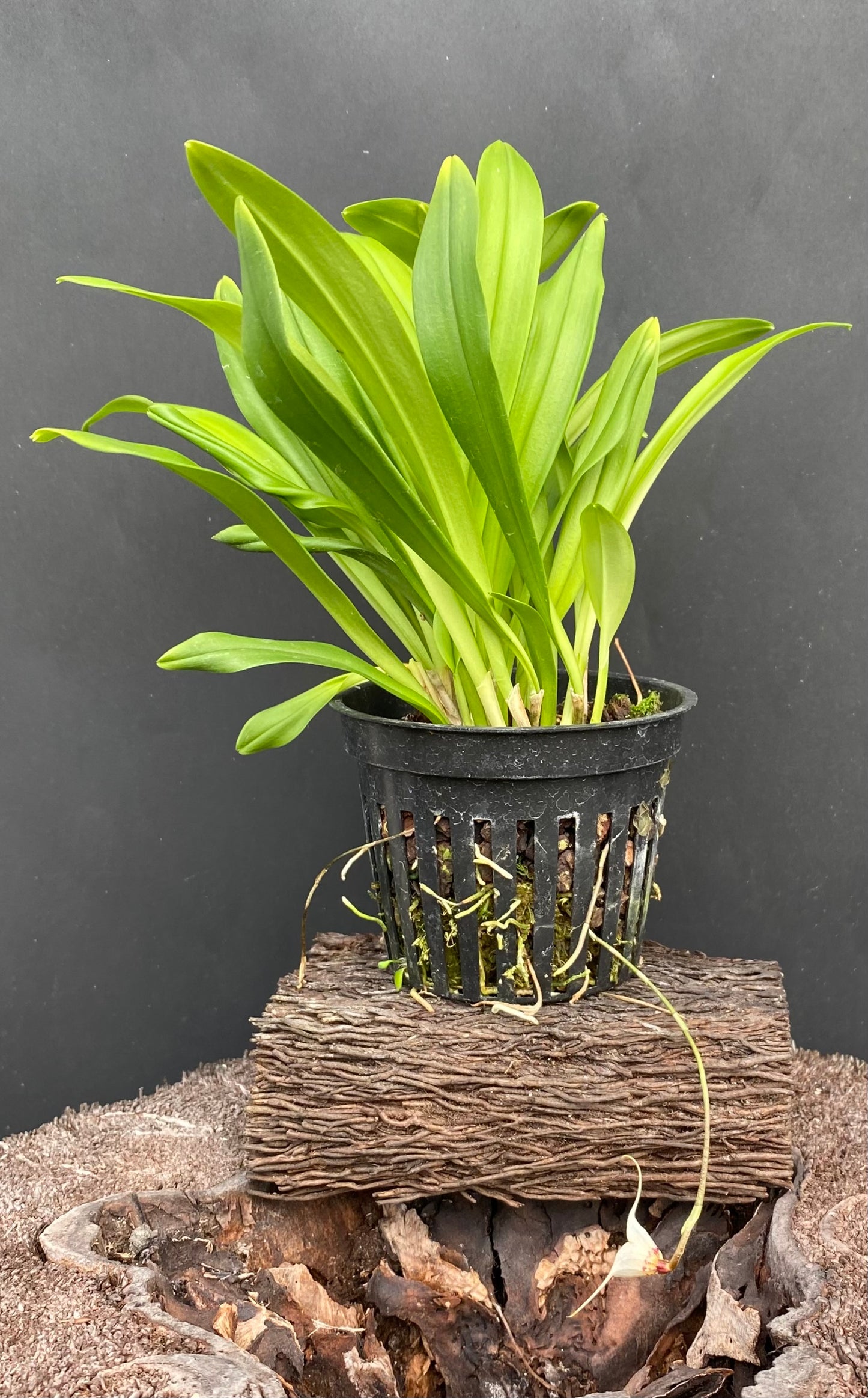Kalapana Orchid Farm
Dracula inaequalis, the Monkey Face orchid~in spike!
Dracula inaequalis, the Monkey Face orchid~in spike!
Couldn't load pickup availability
Rare! Dracula inaequalis- in spike! The is one of the easiest Draculas to grow and bloom, and is adored by many species collectors. This Pleurothallid is native to the cloud forests of South America and can handle temperatures ranging from 55-80 degrees. If you are new to Draculas, this is a perfect one to start with. Spikes emerge from the bottom and sides of a 3" basket. Each plant has 12 + growths & has multiple spikes. Grown in 3" baskets, available in limited supply.
*PLEASE NOTE: We are offering multi-spike plants. As mentioned above, the spikes will emerge from the BOTTOM and SIDES of the 3" basket the plants are grown in. Spikes could be confused for roots to the untrained eye. Plants will be shipped in 4" pots to protect the spikes during transit. It is usually most ideal for their growing conditions to remove the plants from their protective containers and hang them, so their spikes can emerge and hang unhindered.
Care of your Dracula inaequalis
Light Dracula orchids prefer low to medium light levels and should be kept out of direct sunlight. In darker winters, you may need to supplement with artificial light until mid-March.
Temperature Dracula orchids prefer cool to chilly temperatures, especially at night. Daytime temperatures should be between 70°F (21°C) to 80°F (27°C), and nighttime temperatures should not fall below 50°F (10°C).
Humidity Dracula orchids need high humidity, ideally at least 70% relative humidity during the day and higher at night. You can increase humidity by placing the pot in a tray of water or by growing the plant in a place where moss and ferns grow well.
Water Dracula orchids need consistent moisture and should not be allowed to dry out. Water regularly, checking the moisture levels daily. In the summer, you may need to water up to a few times a week, and in the winter, you may only need to water once a week.
Soil Use a moisture-retaining potting medium, such as sphagnum moss, orchid bark, small pine or fern bark, and perlite.
Fertilizer Feed every couple of weeks with a dilute balanced fertilizer.
Repotting Dracula orchids can be sensitive to repotting, so it's best to let them get big before repotting.
Hanging Many Dracula species grow best as hanging plants in a basket.
Share
